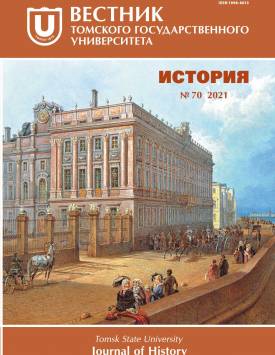Comparative analysis of the organizational structure of political parties in the Russian Federation and the United States
The article is devoted to revealing the distinctive features of the organizational structure of Russian political parties through comparison with American parties. The classical direction of political studies is the study of political parties. Most of the work is devoted to the study of party programs and ideological strategies, the participation of Russian parties in elections and the legal aspects of the activities of political parties, as well as the typology of parties. However, there are few topics related to the organizational structure of the parties. The purpose of our research is to identify the distinctive features of the organizational structure of Russian political parties. American political parties demonstrate a relatively low level of internal unity and do not adhere to a strict set of political goals. This is due to several reasons. Firstly, the American party leaders are limited in the sphere of power and are very sparingly given the opportunity to establish strict party discipline. Secondly, American parties are more concerned about the victory in elections and control over the personnel of the government and parliament, rather than ideological issues. For the Russian parties there is a fairly high level of internal unity and the adherence to a certain party line, they are distinguished by a higher degree of party solidarity. Russian parties can be attributed to centralized organizations. They are built on the principle of hierarchy, i.e. at the very top, the national leader and central bodies direct the activities of regional and local offices. Parties in the US represent a stratarchy, organizations for which the separation of functions and powers between levels of government is inherent, which prevents any of the bodies and levels of government from being absolutely dominant. For American parties, the absence of a large party apparatus is typical, while for Russia there is a larger party apparatus and the presence of the institution of the chairman of the party, which has a great deal of power. Several factors influence the formation of this or that organizational structure of a political party. This is the specificity of political culture (determines the specific nature of the power relations that underlie the organization of political institutions), the peculiarities of the federal structure of states, the nature of the nomination of candidates, the electoral system used in elections, and the national system for organizing elections.
Keywords
the US Democratic Party, the Republican Party of the United States, United Russia, personified parties, «hard» parties, decentralized parties, centralized parties, political partiesAuthors
| Name | Organization | |
| Mukhametov Ruslan S. | Ural Federal University named after the first President of Russia B.N. Yeltsin | muhametov.ru@mail.ru |
References

Comparative analysis of the organizational structure of political parties in the Russian Federation and the United States | Tomsk State University Journal of History. 2021. № 70. DOI: 10.17223/19988613/70/13
